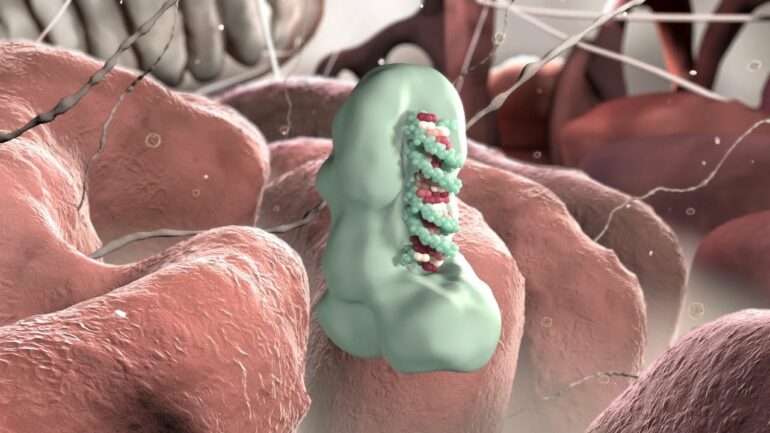When Victor Ambros and Gary Ruvkun discovered a new molecule they called microRNA in the 1980s, it was a fascinating diversion from what for decades had been called the central dogma of molecular biology.
Recognized with the 2024 Nobel Prize in physiology or medicine, Ambros and Ruvkun had identified a new kind of genetic material that transformed how researchers understood gene regulation.
Like DNA, RNA is a form of genetic material made from individual nucleotides linked into chains. According to the central dogma, genetic information flows in one direction: DNA is transcribed into RNA, and RNA is translated into proteins. But in one major deviation from the central dogma, some RNAs are never translated or coded into proteins.
MicroRNA is one type of these so-called noncoding RNAs. They’re short stretches of genetic material that, rather than coding for a specific protein themselves, control the RNAs that do code for proteins. In effect, microRNAs turn particular genes on and off.
I dedicated my scientific career to understanding how RNA works, in part because research on RNA has lagged behind other macromolecules like DNA and proteins. The Nobel Prize recognition of microRNA molecules marks both their importance in biology and their promise as potential treatments for various diseases, including cancer.
MicroRNAs play a key role in regulating gene expression.
MicroRNAs and disease
Scientists regard microRNAs as master regulators of the genome due to their ability to bind to and alter the expression of many protein-coding RNAs. Indeed, a single microRNA can regulate anywhere from 10 to 100 protein-coding RNAs. Rather than translating DNA to proteins, they instead can bind to protein-coding RNAs to silence genes.
The reason microRNAs can regulate such a diverse pool of RNAs stems from their ability to bind to target RNAs they don’t perfectly match up with. This means a single microRNA can often regulate a pool of targets that are all involved in similar processes in the cell, leading to an enhanced response.
Because a single microRNA can regulate multiple genes, many microRNAs can contribute to disease when they become dysfunctional.
In 2002, researchers first identified the role dysfunctional microRNAs play in disease through patients with a type of blood and bone marrow cancer called chronic lymphocytic leukemia. This cancer results from the loss of two microRNAs normally involved in blocking tumor cell growth. Since then, scientists have identified over 2,000 microRNAs in people, many of which are altered in various diseases.
The field has developed a fairly solid understanding of how microRNA dysfunction contributes to disease. Changing one microRNA can change several other genes, resulting in a plethora of alterations that can collectively reshape the cell’s physiology. For example, over half of all cancers have significantly reduced activity…



